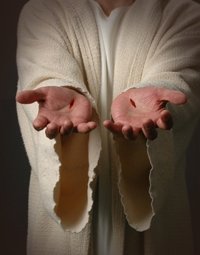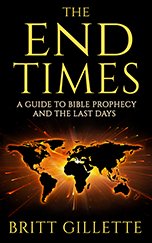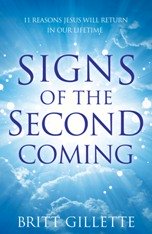 |
 |
|
|
How Long Was Jesus In The Tomb?
As we approach the time of year when we celebrate the resurrection of Jesus, skeptics often raise an important question... Exactly how long was Jesus in the tomb? After all, Jesus said He would be in the grave for three days and three nights (Matthew 12:40). Yet many Christians insist Jesus was crucified on Friday and resurrected on Sunday, and such a scenario doesn't line up with what Jesus said. After all, Friday afternoon through Sunday morning is only two nights and one day. No matter how you look at it, the Friday through Saturday timeline doesn't add up to three days and three nights. So does this mean Jesus was wrong? Did His prophecy go unfulfilled? Is the Bible in error? The skeptics say yes. They think the traditional resurrection timeline proves the Bible is false. But if you actually read the Bible, you'll realize something quite significant - everything Jesus said would happen was fulfilled to the very last letter. The Good Friday ErrorOne thing is certain. An error has been made. But the error has nothing to do with Jesus or the Bible. Instead, the error at the center of this controversy is an error on the part of men - an error which insists Jesus was crucified on Friday. Did you catch that? If not, I'll repeat it. It's an error to insist Jesus was crucified on a Friday. That's right. The Bible never says Jesus was crucified on a Friday. What it does say is the day after the crucifixion was a Sabbath (Luke 23:54), and because the weekly Sabbath occurs on a Saturday, many people have concluded Jesus was crucified on a Friday. At first glance, this seems reasonable. However, it's not so simple. Why? Because not every Sabbath occurs on a Saturday. That's right. In Leviticus 23, God outlines seven special Sabbaths in addition to the regular weekly Sabbath. And depending on the calendar cycle, these special Sabbaths can fall on any day of the week. So if the day after the crucifixion was a special Sabbath, it didn't have to occur on a Saturday. And as it turns out, the day after the crucifixion was a special Sabbath. How can I be so sure? Because the Gospel of John flat out tells us. Read this verse (emphasis mine): "It was the day of preparation, and the Jewish leaders didn’t want the bodies hanging there the next day, which was the Sabbath (and a very special Sabbath, because it was the Passover)." John 19:31 (NLT) Did you catch that? The day after the crucifixion was a "very special Sabbath." Why? Because in fulfillment of the Passover lamb, Jesus was crucified on Passover. And the day after Passover marks the beginning of the Feast of Unleavened Bread. This is important to note because God commanded the people to observe a special Sabbath on the first day of the Feast of Unleavened Bread (Leviticus 23:6-7). In other words, the day after Passover is always a Sabbath, regardless of what day of the week it falls on. Because of this, it's not necessary to assume Jesus was crucified on a Friday. Nevertheless, the traditional idea of Good Friday took hold because of the erroneous belief all Sabbaths occur on Saturday. Biblical Days and SabbathsTo fully understand the timing of the resurrection, you need to understand the Jewish calendar. Not only did God decree seven special Sabbaths in addition to the regular Saturday Sabbath, but a day on the Jewish calendar begins and ends at a different time than we're used to. This too has been a source of confusion. On the Jewish calendar, a new day begins after sunset, not after midnight (Genesis 1:5). Each new day begins with nighttime which lasts from sunset to sunrise (one night). And after sunrise, daytime begins and lasts until sunset (one day). So a full day from sunset to sunset equals one night and one day. This is an important point to remember, because it's pivotal to Jesus's fulfillment of "the sign of Jonah" (Matthew 12:40). Those who believe Jesus was crucified on Friday and resurrected on Sunday will often claim a biblical day includes any part of a day, and so Friday night, Saturday, and Sunday morning equal three days Jesus was in the grave before He was resurrected. But keep this in mind - Jesus specifically said He would spend three days and three nights in the grave. He didn't say He would spend part of three days. He said three days and three nights. If that's the case, how do you reconcile a Friday crucifixion and a Sunday resurrection with the words of Jesus? You can't. If Jesus was buried at sunset on a Friday and resurrected before sunrise the following Sunday, the most you can squeeze out of that timeline is two nights and one day - well short of what Jesus said. This leaves only two possibilities - either Jesus was wrong or the traditional belief of a Friday crucifixion is wrong. I don't know about you, but I choose to believe Jesus. But either way, we don't have to speculate, because the Bible tells us what happened. One Sabbath or Two Sabbaths?In addition to the Friday to Sunday timeline, skeptics of the resurrection love to point out two Bible verses they claim contradict each other. In fact, they claim these verses prove the Bible is a fraud. However, it's just the opposite. These verses prove Jesus fulfilled His promise to rise after three days and three nights. So what are these supposedly contradictory verses? Only these… The Gospel of Mark reveals that Mary Magdalene, Mary the mother of James, and Salome bought burial spices to anoint the body of Jesus after the Sabbath ended (Mark 16:1-2). However, the Gospel of Luke says the women prepared the burial spices at home before the Sabbath began (Luke 23:55-56). So which one is it? Did they rest on the Sabbath and then prepare the burial spices? Or did they prepare the burial spices and then rest on the Sabbath? After all, it can't be both, right? That's what the Bible's skeptics want you to believe. They think these verses are clear proof of a biblical error. But are they? Not if you understand a single week can have two Sabbaths. And believe it or not, the details revealed in Mark and Luke tell us two Sabbaths took place between the crucifixion and the resurrection. The first was a special Sabbath in honor of the first day of the Feast of Unleavened Bread (Numbers 28:18), and the second was the regular weekly Sabbath. And a normal day took place in between those two Sabbaths. This means the women bought and prepared the burial spices on a Friday (in this case, the day before and after a Sabbath). Understanding this is the key to discovering why Good Friday is really Good Wednesday, and how Jesus perfectly fulfilled "the sign of Jonah." What Most Likely HappenedBased on these clues from the Bible, here's the most likely timeline of what happened: Tuesday/Wednesday - Passover began on a Tuesday night at sunset. Shortly thereafter, Jesus celebrated the Last Supper with His disciples. Later that night, religious leaders arrested Jesus in the Garden of Gethsemane and brought Him before the High Priest, Caiaphas. In the morning, Pilate issued the order to crucify Jesus. This occurred at noon on Wednesday (John 19:14), which was still Passover. As sundown approached, the Jewish leaders asked Pilate to hasten the death of those being crucified. They didn't want the bodies left on the crosses because the following day was a special Sabbath (John 19:31). Just before sunset, Joseph of Arimathea and Nicodemus took the body of Jesus and placed it in the tomb (John 19:38-42). Wednesday/Thursday - The first day of the Feast of Unleavened Bread began at sunset on Wednesday evening. This was a special Sabbath, and the women (Mary Magdalene, Mary the mother of James, and Salome) rested before buying and preparing burial spices for the body of Jesus (Mark 16:1). This special Sabbath marked night one and day one of Jesus in the grave. Thursday/Friday - The women bought and prepared the burial spices for Jesus. At sunset, the weekly Sabbath began, and they rested again (Luke 23:56). This day of preparing the burial spices marked night two and day two of Jesus in the grave. Friday/Saturday - The women rested on this day because it was the weekly Sabbath. This second Sabbath marked night three and day three of Jesus in the grave. Saturday/Sunday - Sometime after sunset, the resurrection of Jesus occurred. Having spent three nights and three days in the grave, Jesus fulfilled "the sign of Jonah" (Matthew 12:40) as well as His promise to rise again after three days (John 2:19). We know Jesus rose sometime before sunrise on Sunday, because Mary Magdalene came to the tomb "while it was still dark" on Sunday morning (John 20:1), and she finds the stone rolled away from the entrance and the tomb empty (Luke 24:3). ConclusionSo why does this matter? Some would say it doesn't. After all, if you believe in the crucifixion and the resurrection, why should it matter when they occurred? For those who already believe, it probably doesn't matter. But for those who have yet to believe, it means everything. Either Jesus rose after three days and three nights in the grave as He claimed He would, or He didn't. If He didn't, the Bible isn't true. Fortunately for us, He did! And in doing so, Jesus fulfilled what was said about Him in the law and the prophets (Luke 24:44). The timing of His arrest, trial, crucifixion, death, and resurrection were all a divine fulfillment of Scripture. And fulfilled bible prophecy verifies the Bible as God's Holy Word. While human beings are often mistaken, you can rest assured the Bible never is. So put your trust in Jesus. The Bible says you won't be disappointed (Romans 10:11). Britt Gillette is the founder of End Times Bible Prophecy and the author of multiple books. Receive his book 7 Signs of the End Times for FREE when you sign up for his free Substack. Return to the top of How Long Was Jesus In The Tomb? Return to the End Times Bible Prophecy Website Homepage
|
Now Available! |
|
Search This SiteEnd Times TopicsBible ProphecyTechnologyAdditional TopicsArticle ArchiveAbout ETBPWe're Now on Substack!
|
||
|
| ||





